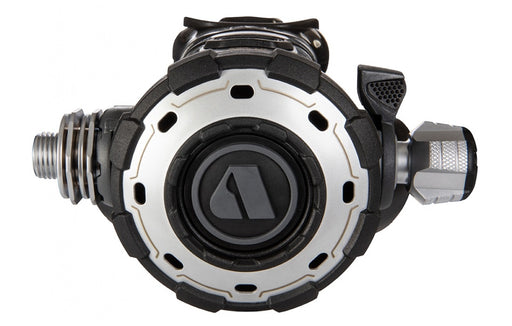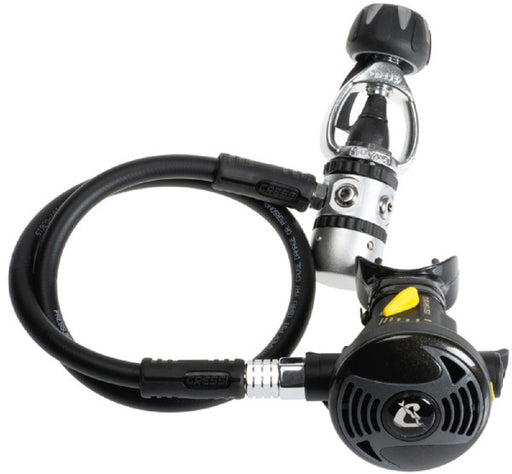
Tusa Regulator RS-790 First and Second Stage, Din
- First stage (R-700) it has, a balanced diaphragm first stage with anti-freeze system.Dry ambient pressure chamber ideal for temperatures below 50°F/10°C
- First stage (R-700) it has, a ribbed section to increase heat transfer and resist freezing. Two H.P. ports and Four L.P. (2 standard/2 high flow) ports
- First stage (R-700) it has, a high flow L.P. ports offer up to 15% increase in air flow. DIN version available as RS-790 DIN (300bar/4350psi)
- Second stage (S-90) it is lightweight, compact composite case design. Pneumatically balanced system.
- Second stage (S-90) it has a Venturi adjustment lever and Ortho-consciously designed mouthpiece. Both first and second stage are eligible for TUSA CARE Free Parts for Life Program - USA Only
The RS-790 delivers performance, durability and comfort making it the ideal choice for discerning divers. The R-700 is a balanced diaphragm first stage designed for cold-water use, it features a dry ambient pressure chamber that prevents water contact with the diaphragm maximizing performance in temperate water conditions below 50°F/10°C. Additionally, the R-700 has an external rib section that nearly doubles the surface area for thermal exchange further reducing ice formaton that can lead to freeze up in extreme conditions. The R-700 has two high pressure ports and four low pressure ports including two high flow (HF) that deliver up to a 15% increase in air flow. It is available in both INT (yoke) and DIN versions. The S-90 second stage is a compact pneumatically balanced system that features a composite housing which insulates and protects under extreme cold-water conditions. The S-90 is equipped with a built-in venturi adjustment lever allowing the diver to select a surface or minimum setting reducing possible free flow or a dive setting for maximum air flow during the dive.
WARNING: This product can expose you to chemicals including lead, which is [are] known to the State of California to cause cancer and reproductive harm. For more information go to www.P65Warnings.ca.gov










